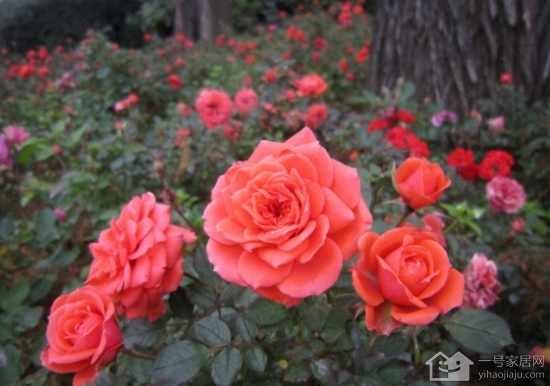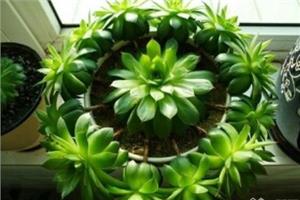What is the best way to cut flowers?
Cut rose is one of the world's four cut flowers, cultivated around the world as many as 8000 varieties, let's take a look at the next cut rose breeding management skills!

Cut rose is a shrub belonging to rose genus of rose family. Leaves alternate, odd-pinnate compound, leaf surface smooth, shiny. Flowers are solitary on top of stems, flowers are double-petaled, flower shapes and colors are rich. Like warm and humid, light environment, growth temperature of 15-25℃, requirements of loose fertile, good drainage of moist soil.
Propagation by grafting, grafting and tissue culture. Grafting takes wild species of Rosa as rootstock. Before cultivation, soil improvement and deepening should be carried out, peat soil, rice chaff, etc. should be added to make the soil loose and permeable, and hemp sauce residue, bone meal, manure, etc. should be added as base fertilizer. The maintenance process promptly prunes redundant flower buds and lateral branches.
The temperature control of greenhouse cut rose is very important, generally 20-28℃ during the day, so pay attention to ventilation and shading in summer, which not only reduces the temperature, but also reduces the light, and the plant is not easy to be infected in a transparent environment.
During the growth period, the soil is slightly moist, and the dormancy period is reduced to once a week. In order to ensure the quantity and quality of flowers, topdressing should be applied in time during the growth period, and liquid nitrogen, phosphorus and potassium can be applied. In winter, in addition to maintaining temperature, it is necessary to supplement light appropriately.
temperature management
The optimum temperature for the growth and development of cut rose is 24-26℃ in the daytime and 14-16℃ at night. In winter, when the temperature is lower than 8℃ at night, many varieties grow slowly, the branches become shorter and the number of abnormal flowers increases. When the temperature was lower than 5℃ for a long time at night, most rose varieties could not send out new branches, or the new branches sent out were shorter and the blind branches increased. Therefore, winter low temperature seriously affects the length of cut flowers, germination and flower bud differentiation, thus affecting the yield and quality; summer when the temperature is higher than 18℃ at night and higher than 28℃ during the day, most rose varieties shorten their growth, reduce the number of petals, reduce the size of flowers, shorten the vase life, and have a greater impact on the quality of cut flowers; the ideal temperature difference between day and night is 10-12℃, and excessive temperature difference leads to black edges of petals. In the production practice in central Yunnan, the annual production of cut rose with high yield and high quality can be guaranteed by controlling the daytime temperature in the greenhouse at 26-28℃ in summer and the night temperature in the greenhouse at 14-16℃ in winter.
soil moisture management
Rose is a water-loving and waterlogged crop. Insufficient soil moisture will affect the yield and quality of cut roses. On the contrary, excessive soil moisture will cause insufficient root ventilation and affect root development. Therefore, scientific water management must be carried out. Drip irrigation system should be adopted to irrigate cut rose flowers by selecting unpolluted river water, spring water or well water. The watering time, watering times and watering amount of cut rose are affected by season, weather, soil and plant growth conditions. Producers mainly determine it according to production experience or continuous observation and detection of soil moisture content and plant growth conditions by instruments. The instrument can use a soil tensiometer for rapid determination of soil moisture, and use a tensiometer to monitor soil moisture and serve as a reference for watering.
fertilization management
The ratio of N:P:K was 3:1:2 in vegetative growth stage and 3:1:3 in flowering stage. The medium elements and trace elements could be applied regularly every month. Fertilization amount should be considered according to soil fertility, plant growth status and yield; fertilization method should be carried out according to facility conditions. In actual production, attention should be paid to increasing the application of organic fertilizer. Soil planting needs to add decomposed organic fertilizer once a year to ensure the growth of cut roses on soil organic fertilizer needs. The total amount added each year is generally 8-10 tons/mu to supplement the decomposition of organic matter and make the soil organic matter reach more than 5%. The best time to add is autumn and late winter every year. When adding organic fertilizer, dig a shallow trench 30 cm deep and 25-30 cm wide in the middle of the ridge surface (between rows), then directly add organic fertilizer, and finally mix evenly with the soil.
Cut rose cultivation time is generally as long as 5 to 8 years, so in the cultivation of the first to apply sufficient base fertilizer, can be applied to decomposed livestock manure and nitrogen, phosphorus, potassium and so on. Grafted or transplanted seedlings were planted in the cultivation room with plant spacing of 45 cm x 30cm. When planting, the roots are spread in all directions, and the grafted parts of the seedlings are buried 3cm under the soil, about 2cm higher than the surrounding soil layer. After planting, irrigate water around the roots and strengthen water and fertilizer management. The seedling needs a large amount of water during the vegetative growth period, watering once every 2-3 days, properly controlling water before axillary bud germination, gradually increasing watering amount from axillary bud germination to new shoot growth, so as to promote branching.
After bud formation to flowering stage, it is the peak of water demand in the whole growth period, and try to irrigate water once a day. In early August and September-October, intertillage and fertilization can be properly carried out, and oil residue, bone meal, chemical fertilizer and plant ash can be applied among plants.
In the early stage of seedling nutrition growth, all flower buds should be removed in time to facilitate the cultivation of flowering mother branches and let the branches grow healthy. However, some varieties sometimes grow 2 or 3 buds on the tip of the branch. At this time, the main bud in the middle should be retained and the auxiliary bud next to it should be removed so as not to disperse nutrients and affect the flowering quality. The buds formed in the hot summer climate will be affected by high temperature and will not bloom well, and have no commercial value. Therefore, the buds will be picked at this time to promote the development of branches.
Roses can be pruned twice a year, autumn and winter. Autumn growth period, bud has not yet formed before the branches can be re-cut to 60-80cm height, in order to update the old branches, control flowering, promote branch development. Winter pruning can be carried out to control plant height and trim tree shape from dormancy to germination in the following year.
If you still want to know more about it, you can continue to pay attention to No.1 Home Network.
Related
- Wuhan Hospital Iron Tree Blooming Result Was Instantly Frightened by the Gardener Master
- Which variety of camellia is the most fragrant and best? Which one do you like best?
- What is the small blue coat, the breeding methods and matters needing attention of the succulent plant
- Dormancy time and maintenance management of succulent plants during dormancy
- Minas succulent how to raise, Minas succulent plant pictures
- What are the varieties of winter succulent plants
- How to raise succulent plants in twelve rolls? let's take a look at some experience of breeding twelve rolls.
- Attention should be paid to water control for succulent plants during dormant period (winter and summer)
- Watering experience of twelve rolls of succulent plants
- Techniques for fertilizing succulent plants. An article will let you know how to fertilize succulent plants.



